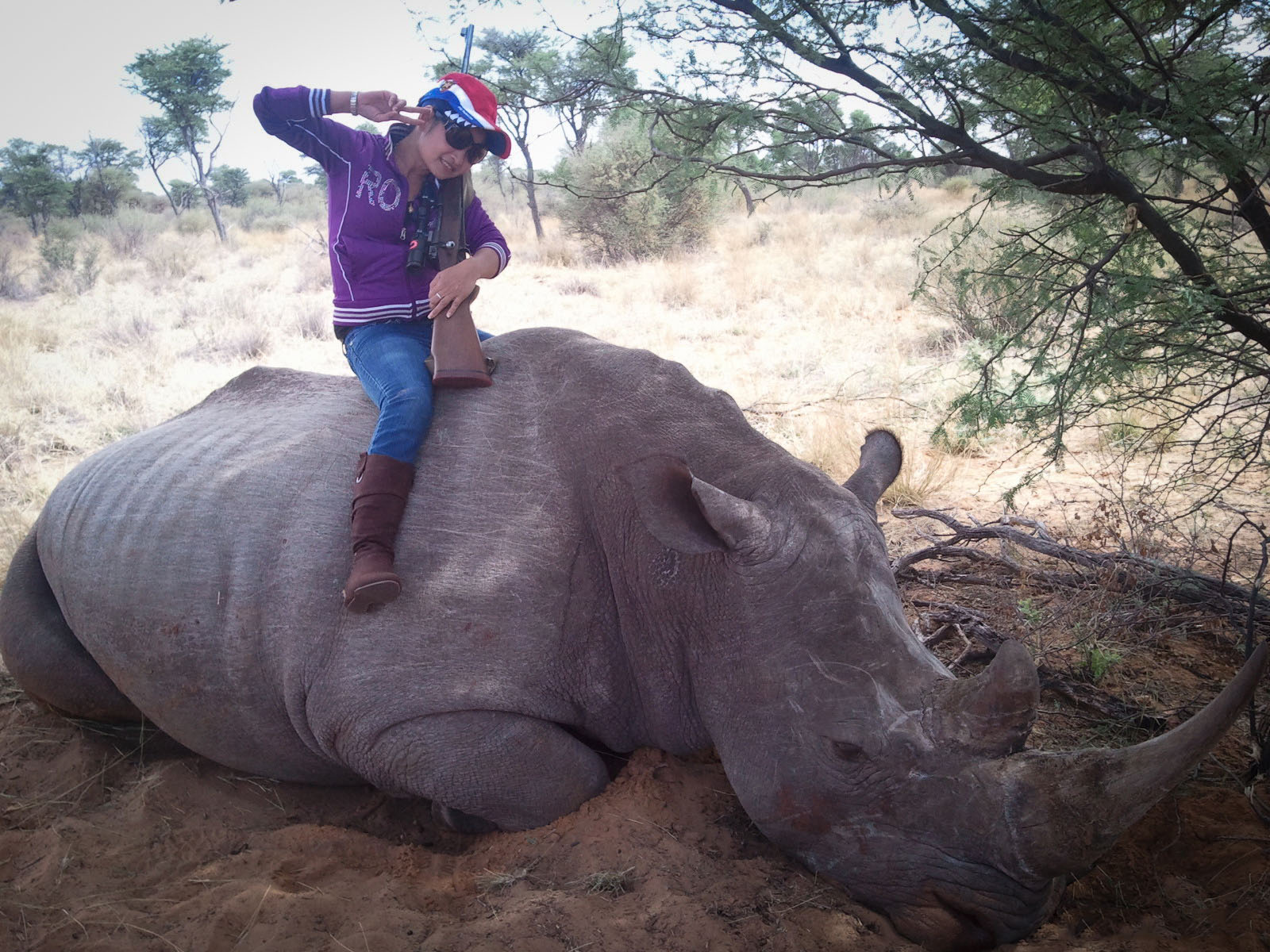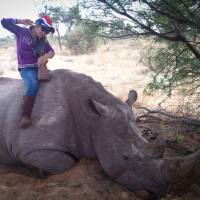Wildlife parts are valuable. A general rule of thumb is that the bigger the beast, the bigger the price. You don't get much bigger than a white rhino (3,000 kg). It is the largest grazing (i.e., purely grass-eating) animal that has ever lived. Its horn is worth, gram for gram, more than gold.
Killing these animals is illegal — but isn't.
Trophy hunting in southern Africa actually drives conservation. Hunters pay large amounts of money to bag a trophy — a head to mount in the john, a skin to roll on, or whatever. This sustains the protection of private game reserves, and hunting advocates suggest that an international trade should be revived to maintain the owners of such protected areas — in the interests of species conservation.
Horns, tusks, bring them back into the market" — such was the drift of compelling arguments made to this writer a year or two ago in the Republic of South Africa by Pelham Jones, chairman of the Private Rhino Owners Association.
He spoke of dehorning for trade; selling horns when rhinos died; he spoke of using the sale of horn to spur conservation and protect rhino habitat. I invited him to provide 400 words here to support his case, but I got a DVD on rhinoceromics instead. So, our previous conversation is far as Jones' rationale will be going here.
Undeterred, I invited somebody else to contribute to the debate, that being qualified British vet Mark Jones, executive director of the Humane Society International/U.K. — whose view in a nutshell, as he told me during the CITES meeting in Bangkok, is that "legalizing rhino-horn trade is just too risky."
At that event, South Africa hosted a number of side-events, fronted by the RSA's Environment Minister Edna Molewa.
"At these meetings," Jones said, "proponents of legalizing rhino-horn trade told us that the CITES trade ban hasn't worked. They told us of the hardships private rhino owners in South Africa face protecting their rhinos from poachers. They told us that many private rhino owners don't want rhinos anymore because they are fast becoming a financial liability.
"And they told us they need to trade in rhino horn to fund rhino conservation."
These arguments have been played out many times before — and surprisingly, trade bans can work. International commercial trade in rhino horn was banned by CITES in 1977, since when many populations of rhinos have steadily increased. The introduction of domestic bans in Taiwan and China in the early 1990s virtually ended poaching.
"But to work, trade bans need to be enforced," Jones vouchsafed. "Protection for the rhinos themselves needs to be combined with effective law enforcement and demand reduction efforts in both transit and consumer countries.
"The economic models presented by trade proponents assume that the market for rhino horn is well understood. It is not. The reasons people buy rhino horn have changed markedly in recent years. High-level investors and those who regard rhino horn as a recreational drug or high-value gift have largely replaced the traditional user for medicinal or fortifying purposes.
"So we have no idea of the demand potential, and we cannot predict the impact legal trade would have," he observed with a certain logic.
The models also assume that countries where rhino horn would be legally sold, most likely Vietnam or China, are capable of regulating the trade. They are not. CITES sanctioned a one-off sale of stockpiled ivory to China in 2009. Since then the price has skyrocketed, most of the ivory on sale in China is illegal, and tens of thousands of Africa's remaining elephants have been massacred. Vietnam openly admits it has no resources for trade control.
In light of such realities that transcend trade-proponents' models, legalizing rhino horn will — it seems logical to suppose — legitimize the demand, undermine demand-reduction efforts and potentially bring millions of new customers into the market.
And, as Jones added, "It will also provide a mechanism by which illegally acquired horn can be laundered. And the impacts on poaching of rhinos from populations outside South Africa could be devastating.
"Finally, South Africa should ask itself whether it really wants to market a product aimed at vulnerable people who believe in mythical properties entirely unfounded in science, in order to fill the coffers of wealthy private game farmers.
Fatal attraction
In the photo accompanying this story, the young lady astride the very large, dead White Rhino in South Africa is a prostitute; the man behind the camera is serving 40 years in prison there. But there is more to this snapshot's complex backstory than that.
Oddly enough, the beast was shot legally in a private game reserve; the woman was a decorative ingredient. The rhino wasn't shot to have its head stuck on a hunter's wall. Instead the animal's horns were supposed to be destined for Laos, then Vietnam or China.
South Africa's legal system crushed Chumlong Lemtongthai, the Thai national, and who decided to use good-time girls to pretend to kill rhinos as trophies. Forty years is an unusually harsh comeuppance.
This animal's horns are still in South Africa. No one is sure what to do with them.



















With your current subscription plan you can comment on stories. However, before writing your first comment, please create a display name in the Profile section of your subscriber account page.